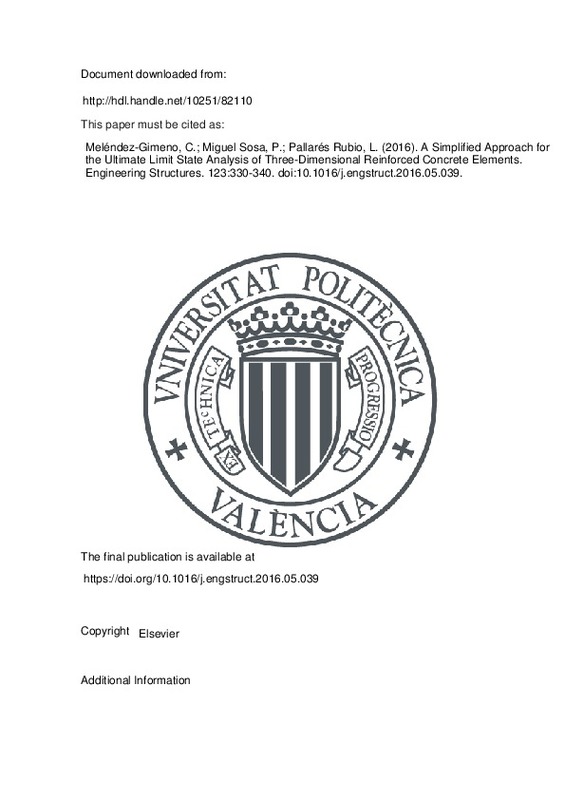JavaScript is disabled for your browser. Some features of this site may not work without it.
Buscar en RiuNet
Listar
Mi cuenta
Estadísticas
Ayuda RiuNet
Admin. UPV
A Simplified Approach for the Ultimate Limit State Analysis of Three-Dimensional Reinforced Concrete Elements
Mostrar el registro completo del ítem
Meléndez-Gimeno, C.; Miguel Sosa, P.; Pallarés Rubio, L. (2016). A Simplified Approach for the Ultimate Limit State Analysis of Three-Dimensional Reinforced Concrete Elements. Engineering Structures. 123:330-340. https://doi.org/10.1016/j.engstruct.2016.05.039
Por favor, use este identificador para citar o enlazar este ítem: http://hdl.handle.net/10251/82110
Ficheros en el ítem
Metadatos del ítem
| Título: | A Simplified Approach for the Ultimate Limit State Analysis of Three-Dimensional Reinforced Concrete Elements | |
| Autor: | Meléndez-Gimeno, Carlos | |
| Entidad UPV: |
|
|
| Fecha difusión: |
|
|
| Resumen: |
Several advanced constitutive models of concrete have been developed in recent decades, some of which are able to reproduce the behaviour of concrete structures with a high level of accuracy. Yet given their complex ...[+]
|
|
| Palabras clave: |
|
|
| Derechos de uso: | Reserva de todos los derechos | |
| Fuente: |
|
|
| DOI: |
|
|
| Editorial: |
|
|
| Versión del editor: | https://doi.org/10.1016/j.engstruct.2016.05.039 | |
| Código del Proyecto: |
|
|
| Agradecimientos: |
|
|
| Tipo: |
|







![[Cerrado]](/themes/UPV/images/candado.png)


